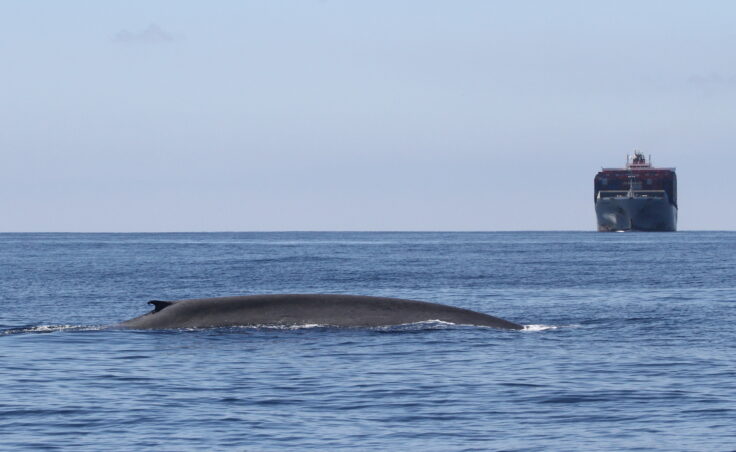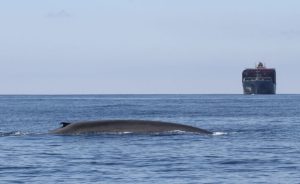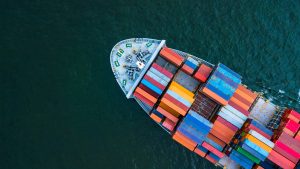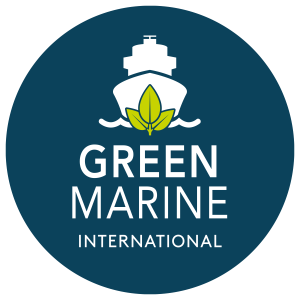A new study examines the risk to whales from ship strikes – the leading cause of death worldwide for the species. Thousands of whales are injured or killed each year after being struck by ships, particularly the large container vessels that transport 80% of the world’s traded goods across the oceans. Yet global data on ship strikes of whales are hard to come by — impeding efforts to protect vulnerable whale species.
The new study led by the University of Washington with researchers from British Antarctic Survey (BAS), has for the first time quantified the risk for whale-ship collisions worldwide for four geographically widespread ocean giants that are threatened by shipping: blue, fin, humpback and sperm whales.
In the study, published in the journal Science, researchers report that global shipping traffic overlaps with about 92% of these whale species’ ranges.
Dr Jennifer Jackson, a whale ecologist at BAS and a co-author of the research, said: “This is the first study to look at this problem at a global scale, enabling global patterns of collision risk to be identified using an extremely large contemporary dataset of four recovering whale species.”
The team found that only about 7% of areas at highest risk for whale-ship collisions have any measures in place to protect whales from this threat. These measures include speed reductions, both mandatory and voluntary, for ships crossing waters that overlap with whale migration or feeding areas.
“This translates to ships traveling thousands of times the distance to the moon and back within these species’ ranges each and every year, and this problem is only projected to increase as global trade grows in the coming decades,” said senior author Briana Abrahms, a UW assistant professor of biology and researcher with the Center for Ecosystem Sentinels.
“As much as we found cause for concern, we also found some big silver linings,” said Ms. Abrahms. “For example, implementing management measures across only an additional 2.6% of the ocean’s surface would protect all of the highest-risk collision hotspots we identified.”
The study uncovered regions already known to be high-risk areas for ship strikes: North America’s Pacific coast, Panama, the Arabian Sea, Sri Lanka, the Canary Islands and the Mediterranean Sea. But it also identified understudied regions at high risk for whaleship collisions, including southern Africa; South America along the coasts of Brazil, Chile, Peru and Ecuador; the Azores; and East Asia off the coasts of China, Japan and South Korea.
The international team behind the study, which includes researchers across five continents, looked at the waters where these four whale species live, feed and migrate by pooling data from disparate sources — including government surveys, sightings by members of the public, tagging studies and even whaling records. The team collected some 435,000 unique whale sightings. They then combined this novel database with information on the courses of 176,000 cargo vessels from 2017 to 2022 — tracked by each ship’s automatic identification system and processed using an algorithm from Global Fishing Watch — to identify where whales and ships are most likely to meet.
Measures on North American Pacific Coast and Mediterranean
The team found that mandatory measures to reduce whale-ship collisions were very rare, overlapping just 0.54% of blue whale hotspots and 0.27% of humpback hotspots, and not overlapping any fin or sperm whale hotspots. Though many collision hotspots fell within marine protected areas, these preserves often lack speed limits for vessels, as they were largely established to curb fishing and industrial pollution. For all four species the vast majority of hotpots for whale-ship strikes — more than 95% — hugged coastlines, falling within a nation’s exclusive economic zone. That means that each country could implement its own protection measures in coordination with the U.N.’s International Maritime Organization.
Of the limited measures now in place, most are along the Pacific coast of North America and in the Mediterranean Sea. In addition to speed reduction, other options to reduce whale-ship strikes include changing vessel routings away from where whales are located, or creating alert systems to notify authorities and mariners when whales are nearby.
“Lowering vessel speed in hotspots also carries additional benefits, such as reducing underwater noise pollution, reducing greenhouse gas emissions, and cutting air pollution, which helps people living in coastal areas,” said lead author Anna Nisi.
(Photo by John Calambokidis, Casdada Research)








